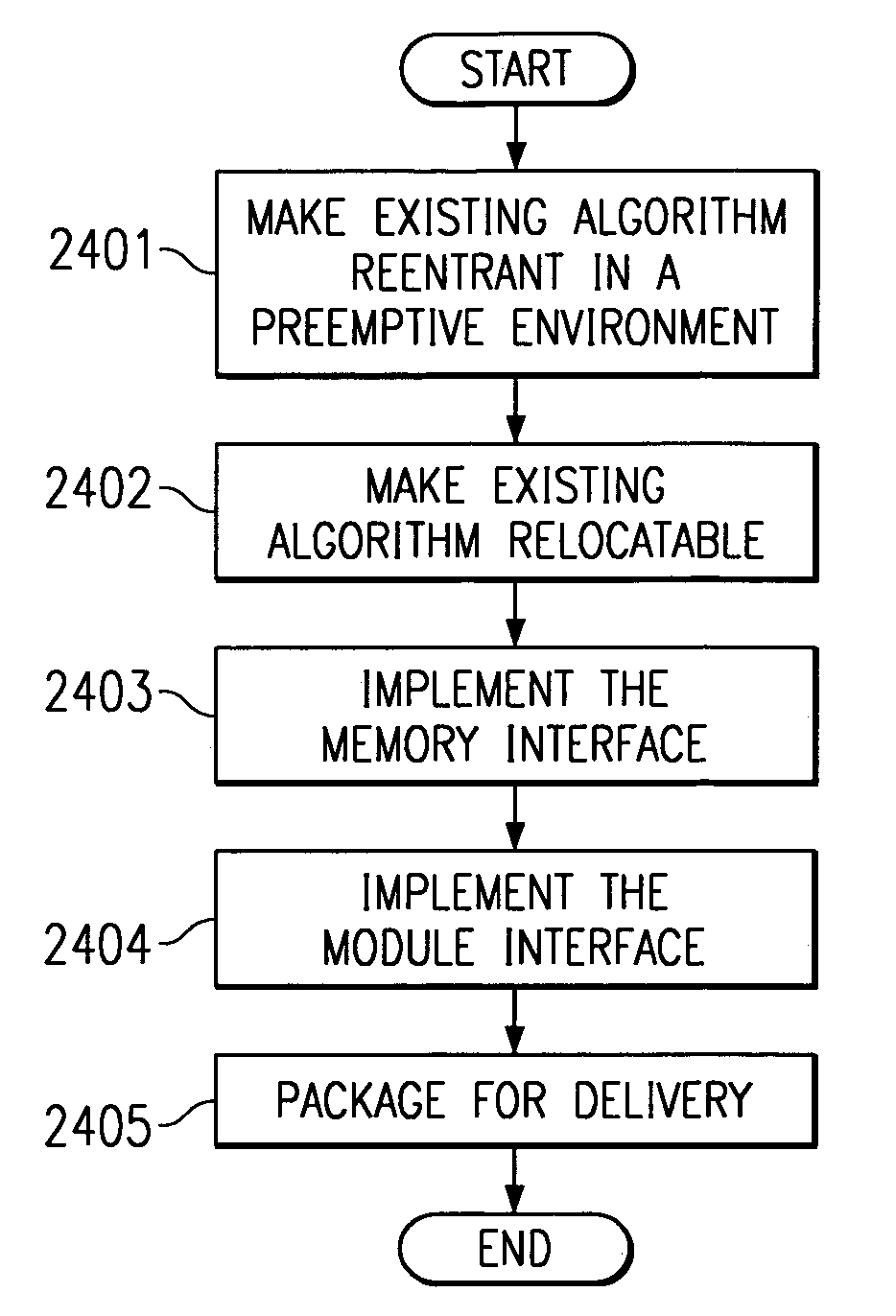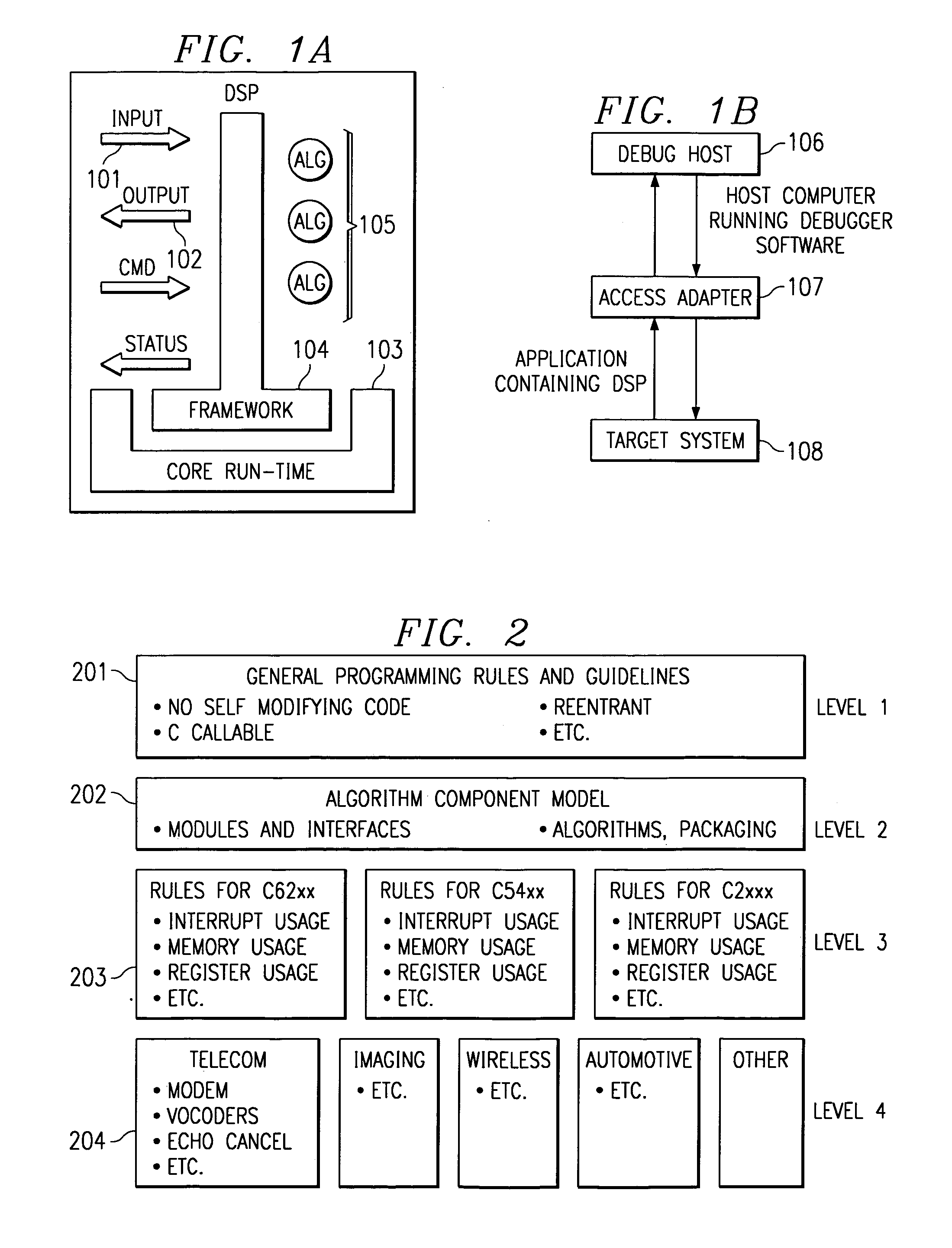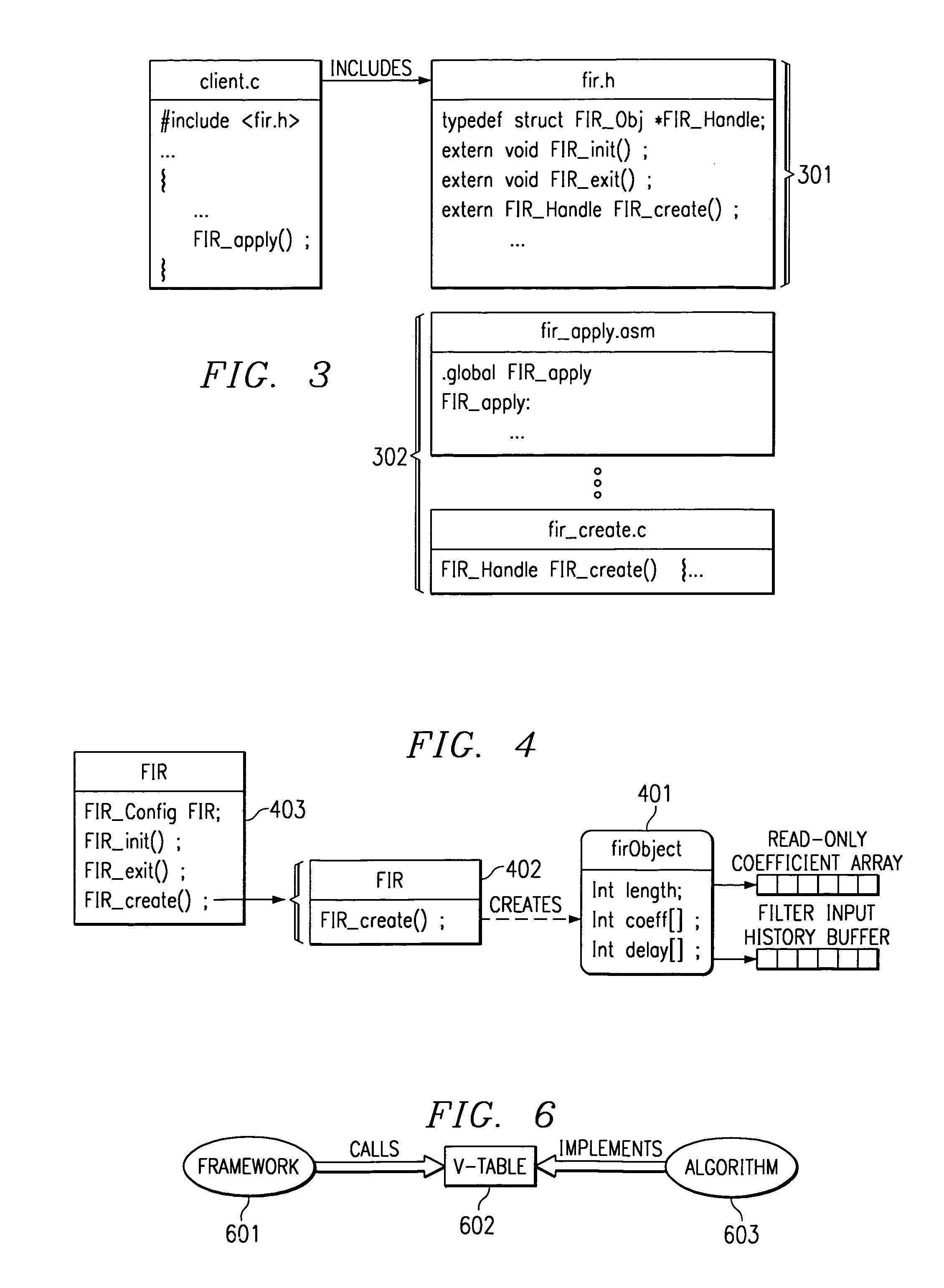Application programming interface with inverted memory protocol for embedded software systems
a software system and programming interface technology, applied in the field of embedded software systems, can solve the problems of not being able to use a dsp implementation of an algorithm in more than one system or application without significant reengineering, and the use of commercial off-the-shelf (cots) software components for dsps, and achieve the effect of little or no overhead
- Summary
- Abstract
- Description
- Claims
- Application Information
AI Technical Summary
Benefits of technology
Problems solved by technology
Method used
Image
Examples
Embodiment Construction
[0056]Many modern DSP software system architectures can be partitioned along the lines depicted in FIG. 1A. Algorithms 105 are “pure” data transducers; i.e., they simple take input data buffers 101 and produce some number of output data buffers 102. Core run-time support 103 includes functions that copy memory, functions to enable and disable interrupts, and real-time debugging aids. Framework 104 is the “glue” that integrates algorithms 105 with real-time data sources 101 and sinks 102 using core run time support 103, to create a complete DSP sub-system. Framework 104 in essence defines a component model with which algorithms 105 must comply. Framework 104 interacts with any real-time peripherals (including other processors in the system) and defines the I / O interfaces for the algorithms 105.
[0057]It has now been discovered that several technical issues have prevented the creation of such a method. One major issue is that algorithm implementations to date have been responsible for ...
PUM
 Login to View More
Login to View More Abstract
Description
Claims
Application Information
 Login to View More
Login to View More - Generate Ideas
- Intellectual Property
- Life Sciences
- Materials
- Tech Scout
- Unparalleled Data Quality
- Higher Quality Content
- 60% Fewer Hallucinations
Browse by: Latest US Patents, China's latest patents, Technical Efficacy Thesaurus, Application Domain, Technology Topic, Popular Technical Reports.
© 2025 PatSnap. All rights reserved.Legal|Privacy policy|Modern Slavery Act Transparency Statement|Sitemap|About US| Contact US: help@patsnap.com



